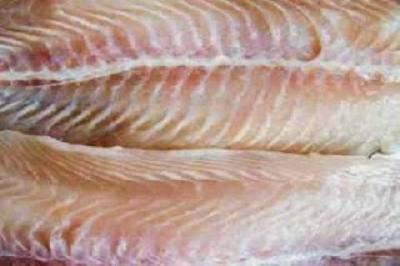Oxalates are naturally-occurring substances found in plants, animals, and in humans. In chemical terms, oxalates belong to a group of molecules called organic acids, and are routinely made by plants, animals, and humans. Our bodies always contain oxalates, and our cells routinely convert other substances into oxalates. For example, vitamin C is one of the substances that our cells routinely convert into oxalates. In addition to the oxalates that are made inside of our body, oxalates can arrive at our body from the outside, from certain foods that contain them.
Although many foods contain oxalate, only nine foods are known to increase oxalate in the urine and kidney stone formation. They are: beets, spinach, rhubarb, strawberries, nuts, chocolate, tea, wheat bran, and all dry beans (fresh, canned, or cooked), excluding lima and green beans. It is best to avoid these foods.
The following are some examples of the most common sources of oxalates, arranged by food group. It is important to note that the leaves of a plant almost always contain higher oxalate levels than the roots, stems, and stalks.
Fruits
blackberries, blueberries, raspberries, strawberries, currants, kiwifruit, concord (purple) grapes, figs, tangerines, and plums
Vegetables
spinach, Swiss chard, beets (root part), beet greens (leaf part), collards, okra, parsley, leeks and quinoa are among the most oxalate-dense vegetables
celery, green beans, rutabagas, and summer squash would be considered moderately dense in oxalates
Nuts and seeds
almonds, cashews, and peanuts
Legumes
soybeans, tofu and other soy products
Grains
wheat bran, wheat germ, quinoa (a vegetable often used like a grain)
Other
cocoa, chocolate, and black tea
There are a few, relatively rare health conditions that require strict oxalate restriction. These conditions include absorptive hypercalciuria type II, enteric hyperoxaluria, and primary hyperoxaluria. Dietary oxalates are usually restricted to 50 milligrams per day under these circumstances. (Please note: these relatively rare health conditions are different than a more common condition called nephrolithiasis in which kidney stones are formed, 80% from calcium and oxalate). What does 50 milligrams of oxalate look like in terms of food? One cup of raw spinach in leaf form (not chopped) weighs about one ounce, and contains about 200 milligrams of oxalate, so 50 milligrams for the day would permit a person to consume only 1/4 cup of raw spinach (and no other oxalate sources could be eaten during the day).
Oxalates and kidney stones
The formation of kidney stones containing oxalate is an area of controversy in clinical nutrition with respect to dietary restriction of oxalate. About 80% of kidney stones formed by adults in the U.S. are calcium oxalate stones. It is not clear from the research, however, that restriction of dietary oxalate helps prevent formation of calcium oxalate stones in individuals who have previously formed such stones. Since intake of dietary oxalate accounts for only 10-15% of the oxalate that is found in the urine of individuals who form calcium oxalate stones, many researchers believe that dietary restriction cannot significantly reduce risk of stone formation.
In addition to the above observation, recent research studies have shown that intake of protein, calcium, and water influence calcium oxalate affect stone formation as much as, or more than intake of oxalate. Finally, some foods that have traditionally been assumed to increase stone formation because of their oxalate content (like black tea) actually appear in more recent research to have a preventive effect. For all of the above reasons, when healthcare providers recommend restriction of dietary oxalates to prevent calcium oxalate stone formation in individuals who have previously formed stones, they often suggest “limiting” or “reducing” oxalate intake rather than setting a specific milligram amount that should not be exceeded. “Reduce as much as can be tolerated” is another way that recommendations are often stated.
The effect of cooking on oxalates
Cooking has a relatively small impact on the oxalate content of foods. Repeated food chemistry studies have shown no statistically significant lowering of oxalate content following the blanching or boiling of green leafy vegetables. A lowering of oxalate content by about 5-15% is the most you should expect when cooking a high-oxalate food. It does not make sense to overcook oxalate-containing foods in order to reduce their oxalate content. Because many vitamins and minerals are lost from overcooking more quickly than are oxalates, the overcooking of foods (particularly vegetables) will simply result in a far less nutritious diet that is minimally lower in oxalates.
Practical tips
For the vast majority of individuals who have not experienced the specific problems described above, oxalate-containing foods should not be a health concern. Under most circumstances, high oxalate foods like spinach can be eaten raw or cooked and incorporated into a weekly or daily meal plan as both baby spinach and mature, large leaf spinach can both make healthy additions to most meal plans. In short, the decision about raw versus cooked or baby versus mature leaf spinach or other oxalate-containing vegetables, for example, should be a matter of personal taste and preference for most individuals.
Table 1
Raw Vegetable Oxalate content milligrams per 100 gram serving
Spinach 750
Beet greens 610
Okra 146
Parsley 100
Leeks 89
Collard greens 74
Adapted from the following sources: (1) United States Department of Agriculture, Human Nutrition Information Service, Agriculture Handbook Number 8-11, “Composition of Foods: Vegetables and Vegetable Products.” Revised August 1984; (2) data gathered by LithoLink Corporation, a metabolic testing and disease management service for kidney stone patients, founded by Dr. Fredric Coe, a University of Chicago Medical School Professor, and posted on its website at www.litholink.com; (3)data presented by Holmes RP and Kennedy M. (2000). Estimation of the oxalate content of foods and daily oxalate intake. Kidney International(4):1662.
References
Assimos, D. G. and Holmes, R. P. Role of diet in the therapy of urolithiasis. Urol Clin North Am. 2000 May; 27(2):255-68.
Curhan, G. C. Epidemiologic evidence for the role of oxalate in idiopathic nephrolithiasis. J Endourol. 1999 Nov; 13(9):629-31.
Freidig AK and Goldman IL. Variation in Oxalic Acid Content among Commercial Table Beet Cultivars and Related Crops. Journal of the American Society for Horticultural Science JASHS January 2011 vol. 136 no. 1, pages 54-60.
Hanson, C. F.; Frankos, V. H., and Thompson, W. O. Bioavailability of oxalic acid from spinach, sugar beet fibre and a solution of sodium oxalate consumed by female volunteers. Food Chem Toxicol. 1989 Mar; 27(3):181-4.
Kelsay, J. L. and Prather, E. S. Mineral balances of human subjects consuming spinach in a low-fiber diet and in a diet containing fruits and vegetables. Am J Clin Nutr. 1983 Jul; 38(1):12-9.
Kikunaga, S.; Arimori, M., and Takahashi, M. The bioavailability of calcium in spinach and calcium-oxalate to calcium-deficient rats. J Nutr Sci Vitaminol(Tokyo). 1988 Apr; 34(2):195-207.
Parivar, F.; Low, R. K., and Stoller, M. L. The influence of diet on urinary stone disease. J Urol. 1996 Feb; 155(2):432-40
Prakash D, Nath P, and Pal M. (1993). Composition, variation of nutritional contents in leaves, seed protein, fat and fatty acid profile of chenopodium species. Journal of the Science of Food and Agriculture 62(2):203-205.
Sienera R. (2006). Oxalate contents of species of the Polygonaceae, Amaranthaceae and Chenopodiaceae families. Food Chemistry 98(2):220-224.
Simpson TS, Savage GP, Sherlock R, et al. Oxalate content of silver beet leaves (Beta vulgaris var. cicla) at different stages of maturation and the effect of cooking with different milk sources. J Agric Food Chem. 2009 Nov 25;57(22):10804-8. doi: 10.1021/jf902124w.




